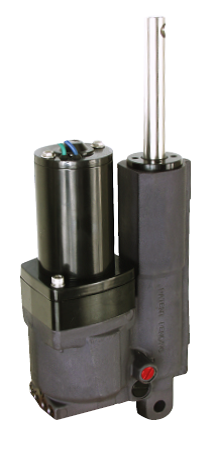Latest innovations free building companies from diesel, so they can focus on alternative energies, efficiency and environment.
Our world is an always-open building yard. From constantly expanding cities to the projects for the most remote corners of the planet, we are building the future. However, hand in hand with the world population, the concern for what we build, and especially for our way of doing that, is rising. The challenges to be accepted to achieve safe work conditions, to decrease the environmental impact and to enhance efficiency are extensive and concern every climate, soil or government. Identifying valid solutions in all cities, nations, continents or climates must be the target of building firms, so that they not only carry out a good work but they also minimize the energy and environmental impact of their activities. The noise levels and the emissions of construction machines arouse particular concerns, for this reason we are increasingly shifting from the use of conventional motors powered with fossil fuels, like diesel, to greener and more silent alternatives. Although technologies of electric power supply, exclusively with battery, are already available and in use for smaller construction machines, the capacities of this technology are not satisfactory for larger machines, yet, as they involve more various requirements. To depend less on fossil fuels for the energy production, it is therefore necessary to adopt valid hybrid solutions. Projects for the construction of an office complex, a public garden, a library or a school are generally welcomed with enthusiasm during city meetings; however, the feedback is much feebler, when building this type of properties inside cities is at stake.
The building yards of the future
Building yards in urban agglomerations might be put to test in the future, too. It is expected laws will be promulgated to rule the problems caused by acoustic pollution and exhaust gas emissions. To be fully compliant with such arrangements, the building sector should take provisions as soon as possible. The solution for several construction machine manufacturers has been electro-mobility: fully electric or hybrid traction plants and systems that use electric or hybrid diesel-electric drive motors, to replace noisier and less eco-compatible power systems. The use of these solutions for smaller machines, like fully electric forklifts, have scored notable progresses. Noisy, polluting and large-displacement vehicles of the past are now smaller, their operation is silent and they emit zero local emissions. The absence of emissions allows their safe use both indoor and outdoor. Various challenges are issued instead for heavy-duty machines: they cannot operate just using electricity, owing to the resources required by heavy-duty cycles and they must still be powered by fossil fuels, which produce gas emissions. It is therefore necessary to provide for the adoption of hybrid solutions. The battery-related technology is actually developing and growing, offering better results and longer work cycles, even without damaging overall sizes and weight. The possibility that also bigger machines will be fully electric in the future is becoming more and more real. Some machinery types can be also directly powered by the electric grid and this challenge concerns the entire sector, starting from producers and original equipment manufacturers (OEM). Fortunately, potentially valid hydraulic solutions currently exist and they adequately suit electro-mobility.

Power on-demand with electro-hydraulic pumps (EHP), also known as ePump
The electro-hydraulic pump (EHP) works in a similar way to conventional systems but without any internal combustion. It uses instead an electric motor combined with a hydraulic pump, controlled by a high-performance mobile hardened drive. Designed for hybrid diesel-electric applications and for all electric mobile applications, the most famous EHP does not recovery energy but it works to save expenditures by using power on-demand in addition to working under various pump/unit speeds. In its typical applications, EHP reduces the fuel consumption from 5% to 20% compared to the standard load sensing system (LS). Moreover, EHP systems allow reducing both emissions and noises in operation. The main feature that more shares in decreasing noises is the power on-demand feature, which allows for the EHP to turn off when not in use. According to the type of application, the energy recovery can be integrated in some EHP systems, too. EHP systems can incorporate recovery as long as the system is designed so that the load can drive back the EHP to work as a motor and a generator. If so, the system can charge the battery itself.
Saving and recycling energy with Electro-Hydrostatic Actuation (EHA) systems

While EHP is a solution for the present, electro-hydrostatic actuator systems (EHA) are the solution for the future. The application type and the work cycle in use are the main factors that determine the choice of an EHP or EHA system. Initially used in the aerospace industry, each EHA is a self-contained hydraulic system, which integrates one cylinder, a single feedback unit, one variable speed pump, a single electric unit and the control electronics in a compact system, needing just an electrical connection to work. EHA systems operate without flow control valves, so that all machine functions are independent on each other. Each function has its pump, used as motor during the energy recovery. Removing the conventional control valve, the energy loss dramatically decreases and makes the system much more efficient. It is estimated EHA can reduce the fuel consumption of a car by up to 50%. However, there is a drawback in EHA technology: it cannot be retrofitted to any current construction vehicles and can be used just on new machines. Unlike the EHP system, EHA represents a huge step forward in technology but also a complete departure from past construction methodologies, used for decades in the sector. This does not mean we should ignore it, on the contrary, the importance of EHA will rise in the implementation of new machines hand in hand with the decrease of the costs of this technology. www.parker.com





